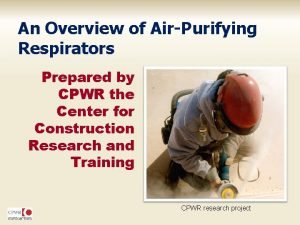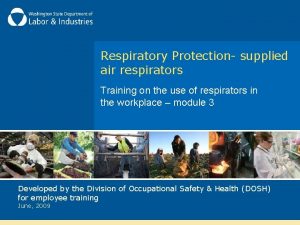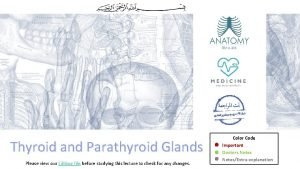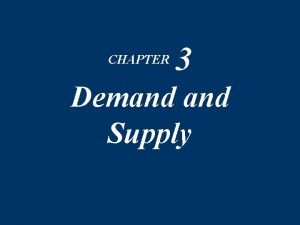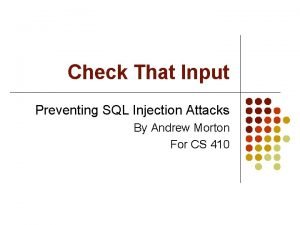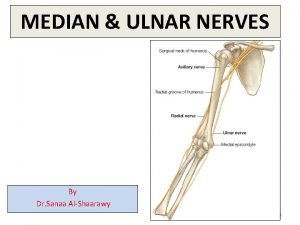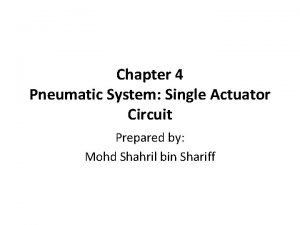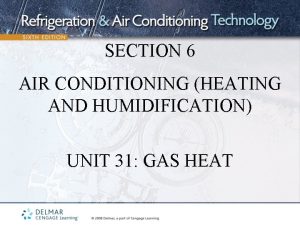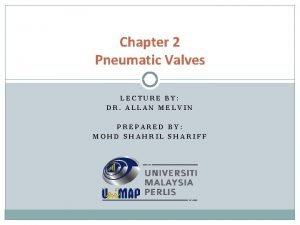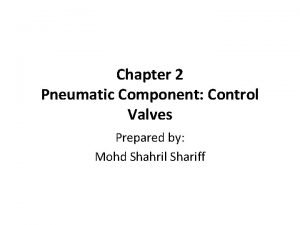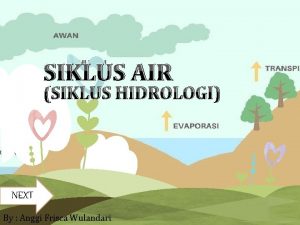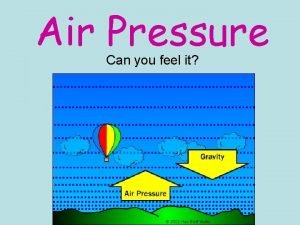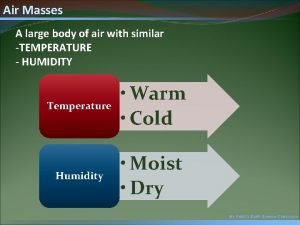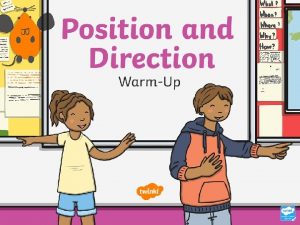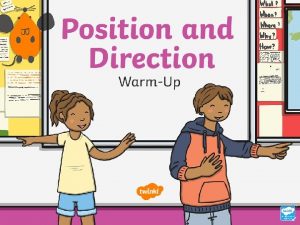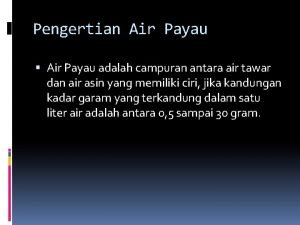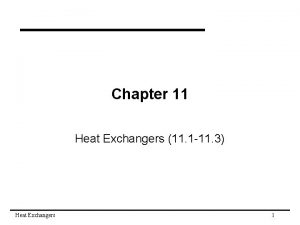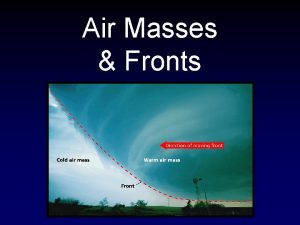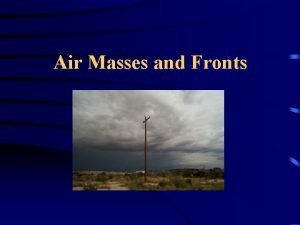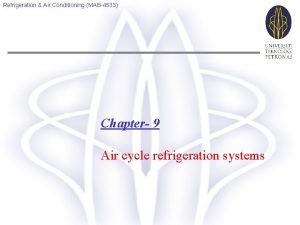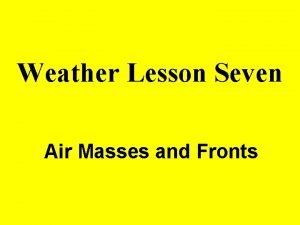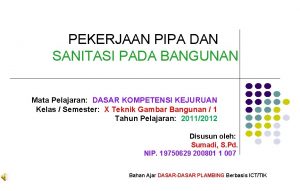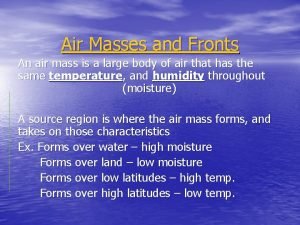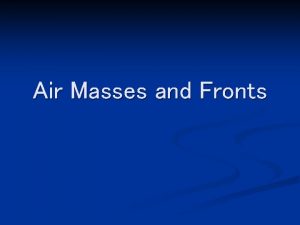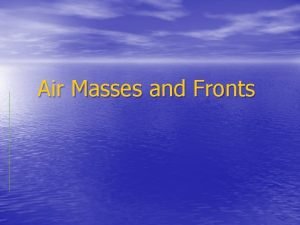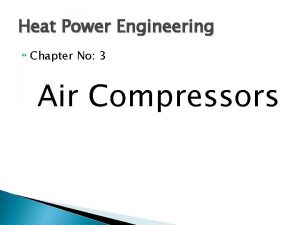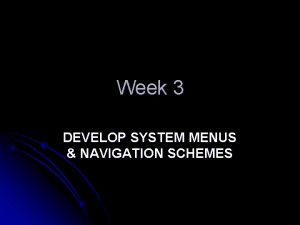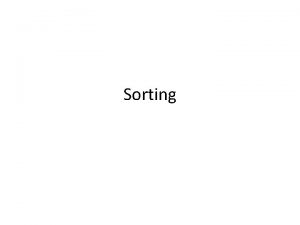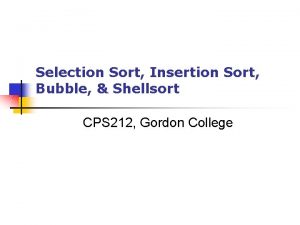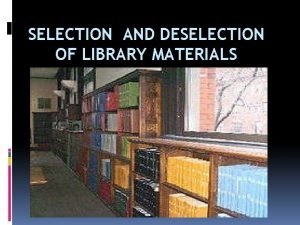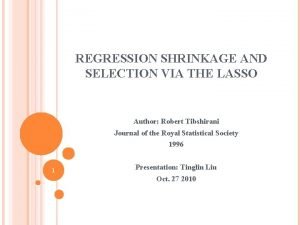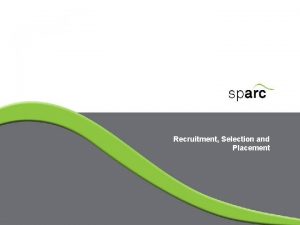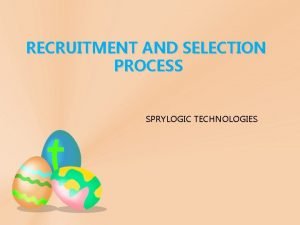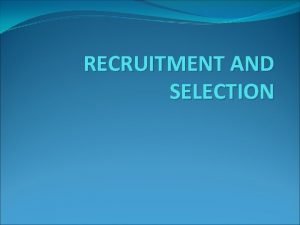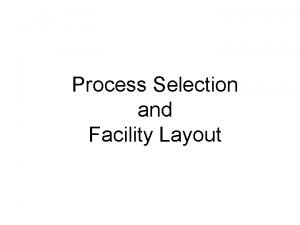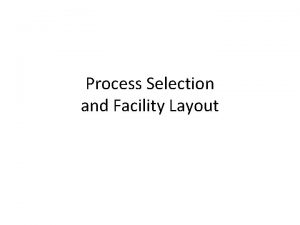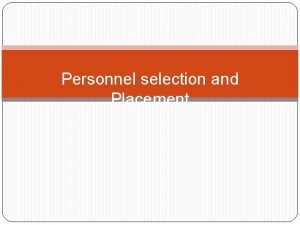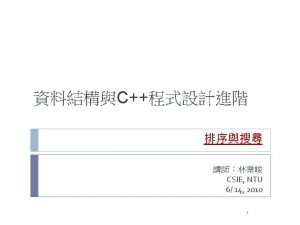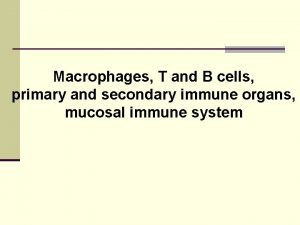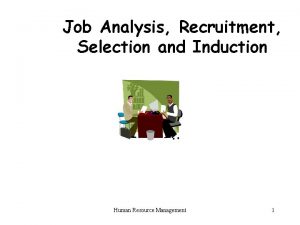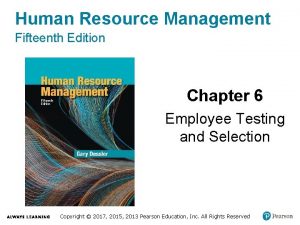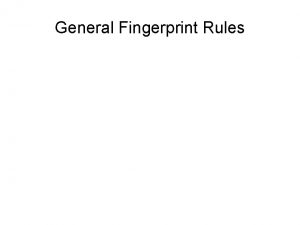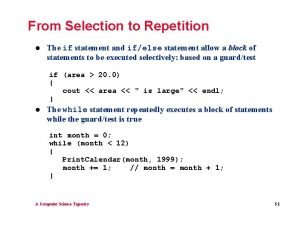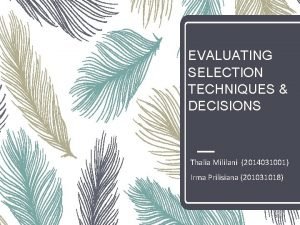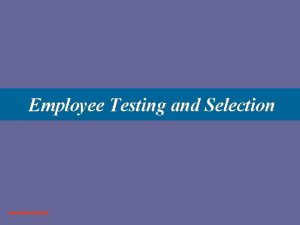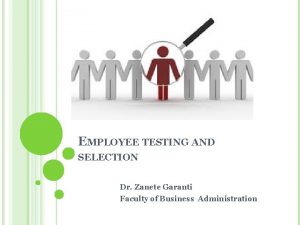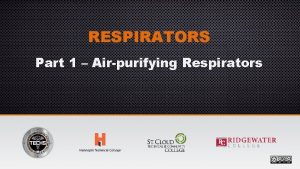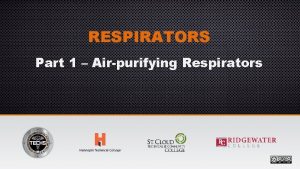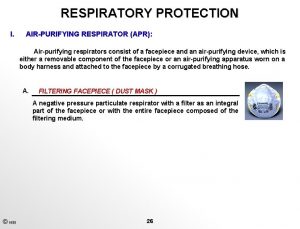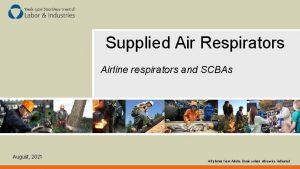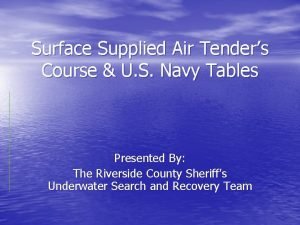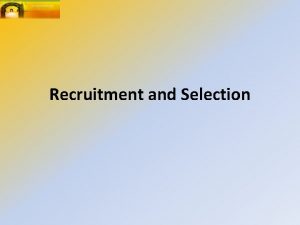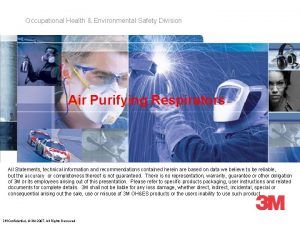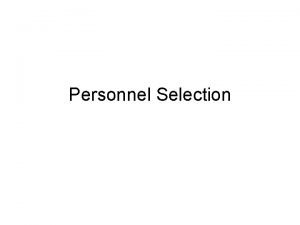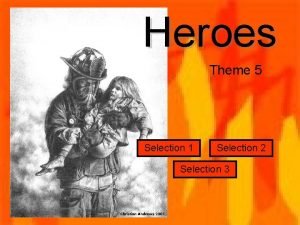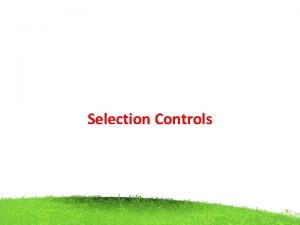Introduction AirPurifying Respirators Supplied Air Respirators Selection and
















































































- Slides: 80

Introduction Air-Purifying Respirators Supplied Air Respirators Selection and Limitations Inspection and Testing Cleaning and Storage Worker Training

Introduction

1 of 10 Introduction Respirators: • respirators are devices designed to protect the wearer from inhaling contaminants such as dust, vapors, gases, and fumes • why wear respirators? – contaminants can enter your blood stream through your lungs – contaminants in your blood are carried throughout your body

2 of 10 Introduction Why wear respirators? • protect lungs from contaminants: – dusts – smoke – chemicals – vapors – gases – fumes • reduce exposure by preventing contaminants from being inhaled

3 of 10 Introduction Why wear respirators? • exposure to airborne hazards can have shortterm and long-term effects – short-term and long-term exposures can lead to permanent illness – it could take years for dust to damage your lungs

4 of 10 Introduction Why wear respirators? • cumulative damage and scarring can lead to diseases such as: – lung cancer – silicosis – asbestosis – mesothelioma – emphysema

5 of 10 Introduction Respiratory hazards: • oxygen deficiency: – usually found in poorly ventilated confined spaces – can be caused by fire, chemicals, or biological action – oxygen deficient atmosphere considered Immediately Dangerous to Life or Health (IDLH) could cause illness or death in a matter of minutes without proper respiratory protection

6 of 10 Introduction Respiratory hazards: • asbestos fibers • crystalline silica • fiberglass particles • arsenic • lead • chromium

7 of 10 Introduction Respiratory hazards: • metal fumes from welding, cutting, and brazing • smoke • toxic gases and vapors • carbon monoxide from heavy equipment and other toxins from chemicals used on site

8 of 10 Introduction Respiratory hazards: • anthrax • smallpox • poisons

9 of 10 Introduction Protection factor: concentration of airborne contaminant outside the respirator concentration inside the respirator • the higher the PF, the higher the protection • ranges from 5 to 10, 000

10 of 10 Introduction Types of respirators: • two forms of respirators: – air-purifying respirators – supplied-air respirators

Air-Purifying Respirators

1 of 16 Air-Purifying Respirators Air-purifying respirators (APR): • use filters or cartridges to purify air • worn only when the atmosphere had enough oxygen • do not supply oxygen

2 of 16 Air-Purifying Respirators Components of air-purifying respirators: • face piece: – made of rubber, plastic, or silicon – face pieces come in different sizes—one size does not fit all

3 of 16 Air-Purifying Respirators Components of air-purifying respirators: • headband: – holds respirator securely to your head – should be adjusted tightly, but not so tight that the mask deforms or becomes uncomfortable

4 of 16 Air-Purifying Respirators Components of air-purifying respirators: • inhalation valve: – opens to allow air to enter as you breathe in – closes when you breathe out

5 of 16 Air-Purifying Respirators Components of air-purifying respirators: • exhalation valve: – valve opens to allow air to escape when you breathe out – valve closes when you breathe out – valve cover protects the valve – if it leaks, you will breathe contaminated air

6 of 16 Air-Purifying Respirators Components of air-purifying respirators: • cartridge/filter: – cleans the air that you breathe – can be HEPA or P, R, or N-series – must correspond to hazard

7 of 16 Air-Purifying Respirators Particulate filters: • made of fibrous material • protect against dust, mist, and fumes • size and concentration of particles and the type of filter affect how well APR works • particulate filters do not protect against gases and vapors

8 of 16 Air-Purifying Respirators Chemical cartridges: • protect against vapors and gases • do not protect against dusts • color-coded to indicate the specific contaminant they protect against

9 of 16 Air-Purifying Respirators Chemical cartridges: • required when multiple hazards exist • protects against dust, vapors, and gases • provides additional respiratory protection

10 of 16 Air-Purifying Respirators Changing filters/cartridges: • cartridges have a limited life that varies with level of exposure to contaminants • if you have difficulty breathing, your particulate filter is probably clogged • gas and vapor cartridges should be replaced every shift or more often if needed

11 of 16 Air-Purifying Respirators Changing filters/cartridges: • if you are unsure how often to change your filter or cartridge, ask your supervisor • if you smell or taste a contaminant, change your cartridge immediately • replace cartridge/filter in an area with clean air

12 of 16 Air-Purifying Respirators Disposable paper masks: • PF = 5 -10 • simplest and least protective form of respiratory protection • trap airborne particles • only effective for large particle dust • do not seal the face to provide a good fit

13 of 16 Air-Purifying Respirators Quarter mask: • PF = 5 -10 • fit from the top of the nose to the top of the chin • use cloth or cartridge filters

14 of 16 Air-Purifying Respirators Half-face APR: • PF = 10 • fit from the top of the nose to under the chin • no eye protection • use cartridges with limited life and should only be used in atmospheres with sufficient oxygen

15 of 16 Air-Purifying Respirators Full-face APR: • PF = 50 • cover the entire face, starting at the forehead, down over the temples and eyes, and under chin • they have a better seal but carry the same limitations as a half-face APR

16 of 16 Air-Purifying Respirators Powered air-purifying respirator: • continuously pulls air through cartridge/filter and blows air into the mask

Supplied-Air Respirators

1 of 3 Supplied-Air Respirators Supplied air respirators (SAR): • use air tanks or air hose to supply clean air • provides greatest degree of respiratory protection • only protection acceptable in an oxygen-deficient environment • requires extensive, hands-on training • requires a “buddy system” in situations that are IDLH

2 of 3 Supplied-Air Respirators Air line respirators: • PF = 1, 000 • hose connected to an air pump that is equipped with a filtering system that purifies the air • hoses should never exceed 300 feet from worker to air source • inspect air hose for punctures and deterioration before use • always carry an escape bottle in an IDLH or oxygen-deficient atmosphere

3 of 3 Supplied-Air Respirators Self-contained breathing apparatus (SCBA): • PF = 10, 000 • highest level of respiratory protection • air is contained in a compressed air tank or cylinder carried on your back • greater mobility than air line respirators • limited supply of air

Selection and Limitations

1 of 7 Selection and Limitations Respirator selection: • not all respirators are right for all jobs • to select the appropriate respirator, you must first determine the contaminant • before choosing a respirator, the air must be tested to find out the concentration of the contaminant in the atmosphere • you must determine the percentage of oxygen in the air and the hazardous substance workers may be exposed to

2 of 7 Selection and Limitations Respirator selection: • before selecting a respirator for a job, you must know: – the concentration of any hazardous substances – the permissible exposure level (PEL) of hazardous substances

3 of 7 Selection and Limitations Respirator selection: • if a contaminant is hazardous to the skin and eyes, you will need full face protection • if you are unsure which respirator to use, ask your supervisor

4 of 7 Selection and Limitations Respirator limitations: • beards and long sideburns can prevent a good seal between your face and the respirator • mustaches are acceptable as long as they fit under the mask without affecting the seal • long hair must be pulled back away from the face • extreme weight gain or loss • major dental work that could change the structure of your face

5 of 7 Selection and Limitations Respirator limitations: • eyeglasses can prevent a good seal for the respirator because the temple bars prevent the respirator from fitting up against the side of the head • spectacle kits are used to solve problems with eyeglasses • if you wear glasses, ask your employer for a spectacle kit • never attempt to work without your glasses

6 of 7 Selection and Limitations Respirator limitations: • contact lenses cannot be used with respirators in a contaminated atmosphere because they are porous and can absorb chemicals • humidity inside full-face respirators fluctuates and may affect the ability to wear contact lenses comfortably • chewing gum, food, or tobacco also puts a strain on the respirator’s seal

7 of 7 Selection and Limitations Medical screening: • before wearing a respirator, you must get medical clearance from a physician or licensed health care professional • the medical exam may include: – risk factor questionnaire – pulmonary function test

Inspection and Testing

1 of 9 Inspection and Testing Respirator inspection: • respirators should be inspected before and after each use and checked at least monthly, even if not used • look for cracks, tears, holes, and excessive dirt • check elastic parts for inflexibility and signs of deterioration • change cartridges on a regular basis or when the wearer experiences resistance when breathing

2 of 9 Inspection and Testing APR inspection: • check: – straps – seal – body – cartridge – face piece – O-ring – inhalation valve – exhalation valve and cover

3 of 9 Inspection and Testing SAR inspection: • check: – straps – face piece – hoses – harnesses – compressor or air tank – regulator – alarm

4 of 9 Inspection and Testing Respirator inspection: • respirators must be adjusted and fit checked each time they are worn to ensure the best possible seal • two common and simple procedures for fit check: – positive pressure check – negative pressure check

5 of 9 Inspection and Testing Positive pressure check: • make sure the respirator fits snuggly on your face • cover the exhalation valve • exhale gently for about 10 seconds—do not exhale too hard or push the mask into the face or fit check will be inaccurate • if the respirator fits, a slight pressure should build up inside the respirator • if air leaks out, the seal is inadequate

6 of 9 Inspection and Testing Negative pressure check: • make sure the respirator fits snuggly on your face • cover the filter openings with the palms of your hands • inhale gently for about 10 seconds—do not push the respirator into the face too hard or the fit check will be inaccurate

7 of 9 Inspection and Testing Negative pressure check: • if the respirator fits correctly, it should collapse slightly inward • if it does not collapse and an air leak is felt, the seal is inadequate

8 of 9 Inspection and Testing Qualitative testing: • while wearing the respirator, a harmless odor or irritant smoke is released • if you cannot detect the substance, than the respirator fits properly

9 of 9 Inspection and Testing Quantitative testing: • most sophisticated fit test • measures the actual amount of leakage into the respirator • aerosol generator is used to create an atmosphere of corn oil, salt, or other harmless aerosol inside a fit chamber or booth • air monitoring instruments measure the concentrations inside the booth • a measurement probe inserted into the mask samples the air inside the mask

Cleaning and Storage

1 of 5 Cleaning and Storage Respirator cleaning: • respirators must be cleaned, stored, and maintained properly to ensure effective use • do not clean respirators with solvents—wash with mild dish detergent or a combination of detergent and disinfectant

2 of 5 Cleaning and Storage Respirator cleaning: • use a brush and warm water to wash away dust or dirt • thoroughly rinse with clean water to remove detergent that could cause skin irritation

3 of 5 Cleaning and Storage Respirator cleaning: • remove APR cartridges before washing respirator—they should not get wet! • air dry respirators on a drying rack or clean surface • position respirators so that face piece rubber will not set crooked while drying • re-inspect all respirator pieces for defects before reassembling them

4 of 5 Cleaning and Storage Respirator storing: • at the end of each shift, store the respirator in the original box or bag in such a way as to not distort its shape to protect it from: – dust – sunlight – extreme heat and cold – excessive moisture – chemicals

5 of 5 Cleaning and Storage Respirator maintenance: • only trained and qualified personnel are authorized to repair respirators • if you find any defect in your respirator, report it to your supervisor • keep a record of all repairs and inspections • never mix parts of respirators from different manufacturers • never submerge SCBAs in water

Worker Training

1 of 4 Worker Training Before using respirators: • the employer must develop and implement a respiratory protection training program in compliance with OSHA standard 1926. 103 • the employer must provide respiratory protection training to all workers prior to workers' respirator use

2 of 4 Worker Training objectives: • recognize why respirators are necessary and how improper fit, use, or maintenance can compromise their protective effects • recognize the capabilities and limitations for each type of respirator • recognize the effectiveness of respirators in emergency situations • perform proper inspection, donning, and doffing procedures

3 of 4 Worker Training objectives: • perform proper fit check procedures • recognize proper respirator maintenance and storage • recognize medical signs/symptoms that may limit or prevent effective use • understand the general requirements of OSHA standard 29 CFR 1926. 103

4 of 4 Worker Training requirements: • training must be provided prior to use, unless acceptable training has been provided by another employer within the past 12 months • retraining is required annually and when: – changes in the workplace or type of respirator render previous training obsolete – there are inadequacies in the worker’s knowledge or use – any other situation arises in which retraining appears necessary

The End

Particulate Filters

Chemical Cartridge

Disposable Paper Mask

Quarter Mask

Half-Face APR

Full-Face APR

Powered APR

Supplied Air Respirator

Self-Contained Breathing Apparatus

Positive Pressure Check

Negative Pressure Check

Qualitative Testing

Quantitative Testing

Proper Cleaning

Worker Training

Asbestos Fibers

 Types of respirators n r p
Types of respirators n r p Supplied air training test answers
Supplied air training test answers Air mixed gas surface supplied diving new orleans
Air mixed gas surface supplied diving new orleans Hubungan air dengan tanah
Hubungan air dengan tanah Quantity supplied vs supply
Quantity supplied vs supply Supply and demand curve shifts
Supply and demand curve shifts Pyramidal lobe
Pyramidal lobe Quantity supplied vs supply
Quantity supplied vs supply Barter
Barter Escaping all user supplied input
Escaping all user supplied input Ulnar nerve entrapment
Ulnar nerve entrapment Power absorbed or supplied
Power absorbed or supplied Two way selection and multiway selection in c
Two way selection and multiway selection in c Two way selection and multiway selection in c
Two way selection and multiway selection in c Procedure of pure line selection
Procedure of pure line selection Balancing selection vs stabilizing selection
Balancing selection vs stabilizing selection Artificial selection vs natural selection
Artificial selection vs natural selection K selection r selection
K selection r selection Natural selection vs artificial selection
Natural selection vs artificial selection Difference between continuous and discontinuous variation
Difference between continuous and discontinuous variation Disruptive selection
Disruptive selection Logistic model of population growth
Logistic model of population growth Natural selection vs artificial selection
Natural selection vs artificial selection Introduction of recruitment
Introduction of recruitment Supply air throttling system
Supply air throttling system Return air and supply air
Return air and supply air Flow control valve direction
Flow control valve direction Supply air throttling and exhaust air throttling
Supply air throttling and exhaust air throttling Air temperature
Air temperature Air hujan sanggup menjadi air tanah lantaran proses … *
Air hujan sanggup menjadi air tanah lantaran proses … * Reaksi anorganik dalam pelarut air dan non air
Reaksi anorganik dalam pelarut air dan non air Chapter 12 section 1 what causes air pollution answers
Chapter 12 section 1 what causes air pollution answers Can you feel it in the air in the air
Can you feel it in the air in the air An air mass is created when a large body of air
An air mass is created when a large body of air Two cold air masses converge on a warm air mass
Two cold air masses converge on a warm air mass Right hand in the air left hand in the air
Right hand in the air left hand in the air Mendidih
Mendidih Right hand in the air left hand in the air
Right hand in the air left hand in the air Air payau adalah campuran….
Air payau adalah campuran…. Single pass heat exchanger
Single pass heat exchanger Whats an air mass
Whats an air mass Air masses & frontswhat is an air mass?
Air masses & frontswhat is an air mass? Cop of reversed brayton cycle
Cop of reversed brayton cycle Maritime tropical air mass symbol
Maritime tropical air mass symbol Denah sanitasi air kotor
Denah sanitasi air kotor Polar air masses have low air pressure true or false
Polar air masses have low air pressure true or false Chapter 12 air section 1 what causes air pollution
Chapter 12 air section 1 what causes air pollution Cold air mass overtakes warm air mass
Cold air mass overtakes warm air mass Air masses & frontswhat is an air mass?
Air masses & frontswhat is an air mass? Air masses & frontswhat is an air mass?
Air masses & frontswhat is an air mass? Stationary front
Stationary front Introduction about air pollution
Introduction about air pollution Air compressor introduction
Air compressor introduction Recruitment selection and induction
Recruitment selection and induction Intro paragraph layout
Intro paragraph layout New and navigation schemes selection of window
New and navigation schemes selection of window History of curriculum
History of curriculum Recruitment policy meaning
Recruitment policy meaning Difference between selection sort and bubble sort
Difference between selection sort and bubble sort Difference between insertion sort and selection sort
Difference between insertion sort and selection sort Selection placement
Selection placement Selection and deselection
Selection and deselection Regression shrinkage and selection via the lasso
Regression shrinkage and selection via the lasso Recruitment selection and placement
Recruitment selection and placement Recruitment and selection meaning
Recruitment and selection meaning Recruitment and selection difference
Recruitment and selection difference Sequence, selection, and iteration
Sequence, selection, and iteration Importance of process selection and facility layout
Importance of process selection and facility layout Process selection and facility layout
Process selection and facility layout Petit fours bases
Petit fours bases Personnel selection meaning
Personnel selection meaning Bubble sort insertion sort
Bubble sort insertion sort Bisophil
Bisophil Job analysis recruitment and selection
Job analysis recruitment and selection Human resources management final exam
Human resources management final exam Chapter 6 employee testing and selection ppt
Chapter 6 employee testing and selection ppt Write the ( 5 ) rules in the selection of delta.
Write the ( 5 ) rules in the selection of delta. 6561x6561
6561x6561 Evaluating selection techniques and decisions
Evaluating selection techniques and decisions Employee testing and selection
Employee testing and selection Employee testing and selection summary
Employee testing and selection summary
